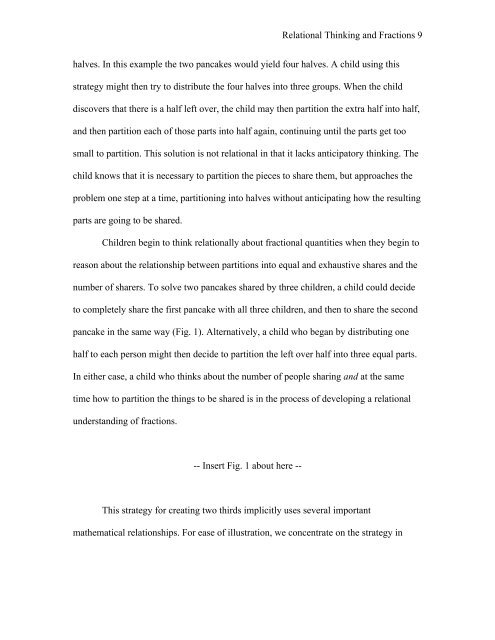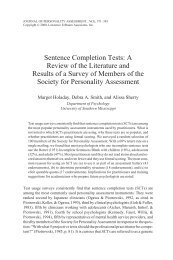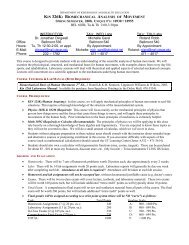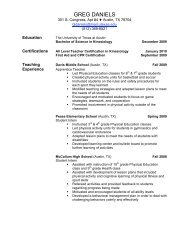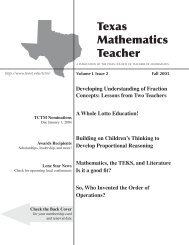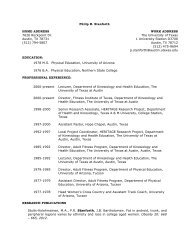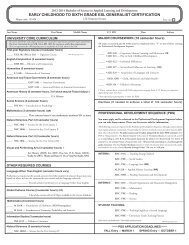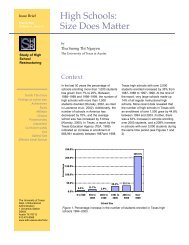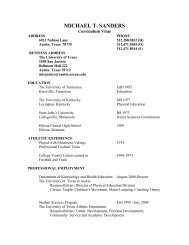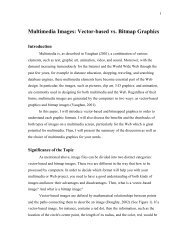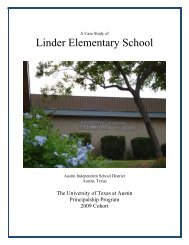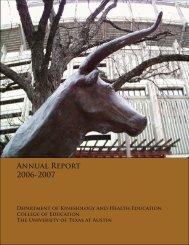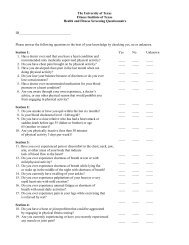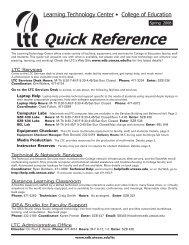The Algebraic Nature of Fractions: Developing Relational Thinking ...
The Algebraic Nature of Fractions: Developing Relational Thinking ...
The Algebraic Nature of Fractions: Developing Relational Thinking ...
You also want an ePaper? Increase the reach of your titles
YUMPU automatically turns print PDFs into web optimized ePapers that Google loves.
<strong>Relational</strong> <strong>Thinking</strong> and <strong>Fractions</strong> 9<br />
halves. In this example the two pancakes would yield four halves. A child using this<br />
strategy might then try to distribute the four halves into three groups. When the child<br />
discovers that there is a half left over, the child may then partition the extra half into half,<br />
and then partition each <strong>of</strong> those parts into half again, continuing until the parts get too<br />
small to partition. This solution is not relational in that it lacks anticipatory thinking. <strong>The</strong><br />
child knows that it is necessary to partition the pieces to share them, but approaches the<br />
problem one step at a time, partitioning into halves without anticipating how the resulting<br />
parts are going to be shared.<br />
Children begin to think relationally about fractional quantities when they begin to<br />
reason about the relationship between partitions into equal and exhaustive shares and the<br />
number <strong>of</strong> sharers. To solve two pancakes shared by three children, a child could decide<br />
to completely share the first pancake with all three children, and then to share the second<br />
pancake in the same way (Fig. 1). Alternatively, a child who began by distributing one<br />
half to each person might then decide to partition the left over half into three equal parts.<br />
In either case, a child who thinks about the number <strong>of</strong> people sharing and at the same<br />
time how to partition the things to be shared is in the process <strong>of</strong> developing a relational<br />
understanding <strong>of</strong> fractions.<br />
-- Insert Fig. 1 about here --<br />
This strategy for creating two thirds implicitly uses several important<br />
mathematical relationships. For ease <strong>of</strong> illustration, we concentrate on the strategy in


